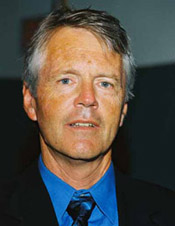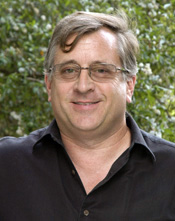Two scientists at UC Santa Cruz--James Estes, professor of ecology and evolutionary biology, and Thorne Lay, professor of Earth and planetary sciences--have been elected to the National Academy of Sciences in recognition of their distinguished and continuing achievements in original scientific research. Membership in the academy is one of the highest honors a U.S. scientist can receive.
"The election of Thorne Lay and Jim Estes to the National Academy of Sciences is great news, and it shows the growing impact that UC Santa Cruz faculty are having across all the sciences," said Paul Koch, dean of physical and biological sciences at UCSC. "Jim's work has revealed how predators can profoundly shape ecosystems, leading him to argue forcefully that their loss is of great concern for conservation biology. Thorne's innovations in the study of earthquakes have generated amazing insights about the structure of the deep earth and how the earth ruptures to generate quakes, and he's been a leader on pressing societal questions like the detection of nuclear tests. It's gratifying to see that their colleagues around the nation recognize their achievements."
Estes and Lay join 12 other UCSC faculty who are members of the National Academy of Sciences.
Estes is best known for his groundbreaking research on the ecological role of sea otters in coastal ecosystems. He has ongoing research projects on the ecology of coastal marine communities and strategies for marine conservation. In recent years, he has led international teams of scientists investigating how a broad range of ecosystems have been disrupted by the decline of large predators and other "apex consumers" at the top of the food chain.
A fellow of the California Academy of Sciences, Estes joined the UCSC faculty in 1978. His awards and honors include the Western Society of Naturalists' Lifetime Achievement Award, Pew Marine Conservation Fellowship, the C. Hart Merriam Award of the American Society of Mammalogists, and the USGS Shoemaker Award for Distinguished Achievement in Communication.
Lay is an eminent seismologist known for his contributions to the understanding of earthquake rupture processes, the use of seismic waves to study the deep structure of the Earth's interior, and the development of seismological methods for monitoring nuclear test ban treaties. His investigations of recent powerful earthquakes around the world include rapid determination of fault parameters using broadband seismic waves.
Lay's extensive service on national and international committees includes terms as chair of the board of directors of the Incorporated Research Institutions for Seismology and chair of the National Research Council's Committee on Seismology. A fellow of the American Academy of Arts and Sciences, the American Association for the Advancement of Science, and the American Geophysical Union (AGU), he received the AGU's Macelwane Medal in 1991. Lay joined the UCSC faculty in 1989.




